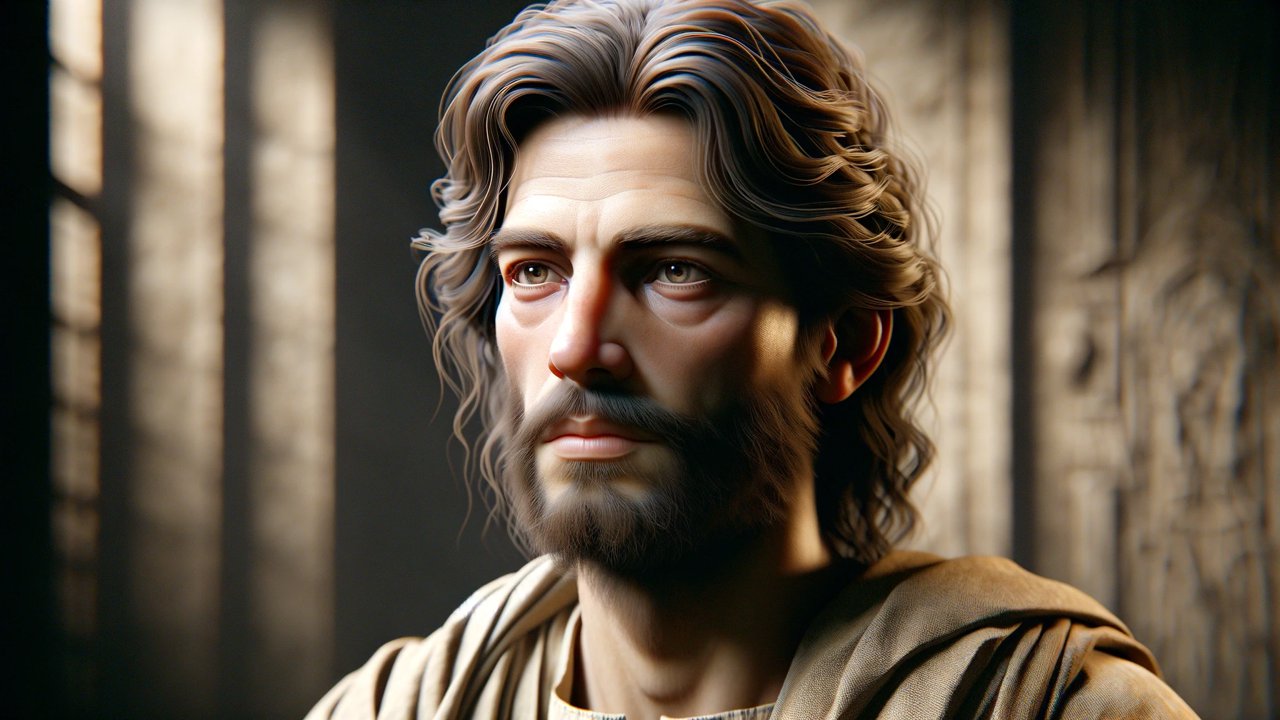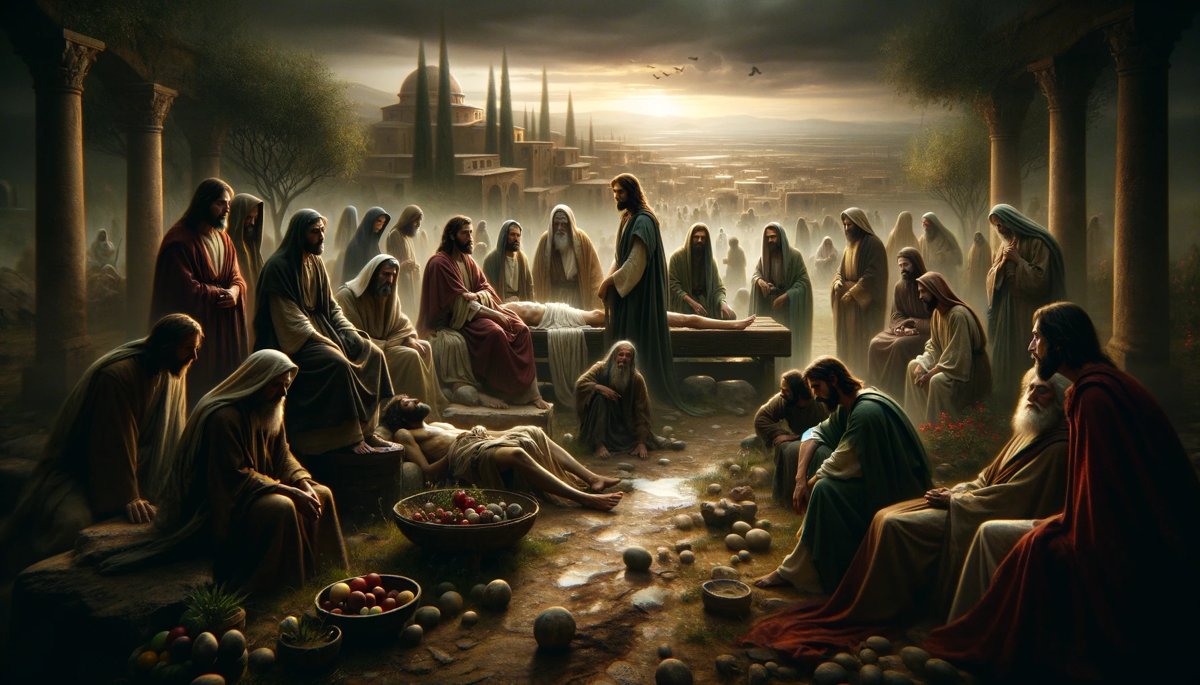Home>Christian Videos>Bible Stories>How Old Was Jesus Christ When He Died


Bible Stories
How Old Was Jesus Christ When He Died
Published: February 29, 2024
Ericka Andersen, an editor at Christian.net, expertly merges digital strategy with content creation, focusing on faith and societal issues. Her communication skills enhance the platform's engaging narratives, fostering meaningful dialogue on belief's impact on society.
Discover the age of Jesus Christ at the time of his death and explore the significance of this event in the context of Bible stories. Uncover the profound impact of his life and teachings.
(Many of the links in this article redirect to a specific reviewed product. Your purchase of these products through affiliate links helps to generate commission for Christian.net, at no extra cost. Learn more)
Table of Contents
The Life of Jesus Christ
Jesus Christ, the central figure of Christianity, is believed to have been born in Bethlehem, a town in Judea, during the reign of King Herod. The exact date of his birth is not known, but it is traditionally celebrated on December 25th. The life of Jesus is primarily documented in the New Testament of the Bible, which describes his teachings, miracles, and the events leading up to his crucifixion. According to the Gospels, Jesus spent his early years in Nazareth, where he grew up and worked as a carpenter. At around the age of thirty, he began his public ministry, traveling throughout Galilee and Judea, preaching about the Kingdom of God and performing various miracles. His teachings and actions attracted a following of disciples and supporters, but also drew the attention of religious and political authorities.
Jesus' life and teachings are foundational to the Christian faith, and his impact on the world continues to be profound. His message of love, compassion, and forgiveness has inspired countless individuals and communities throughout history. The life of Jesus Christ serves as a model for many Christians, guiding their beliefs, values, and actions. His teachings on humility, service, and the importance of faith have left an indelible mark on the world, shaping the course of history and influencing countless cultures and societies.
Jesus' life was characterized by acts of compassion and healing, as well as bold challenges to the religious and social norms of his time. His ministry was marked by a profound concern for the marginalized and oppressed, and he often spoke out against injustice and hypocrisy. The Gospels depict Jesus as a figure of great wisdom and authority, engaging in debates with religious leaders and offering profound parables and teachings that continue to resonate with people of faith today.
The life of Jesus Christ culminated in his crucifixion, a pivotal event in Christian theology. His death and subsequent resurrection are central to the Christian belief in salvation and the forgiveness of sins. The significance of Jesus' life, death, and resurrection is a cornerstone of Christian faith, shaping the beliefs and practices of millions of believers around the world.
The Crucifixion of Jesus
The crucifixion of Jesus is a central event in Christian theology, marking the culmination of his earthly ministry and the fulfillment of divine purpose. According to the New Testament, Jesus was arrested in the Garden of Gethsemane, following the Last Supper with his disciples. He was then subjected to a series of trials before the Jewish religious authorities and the Roman governor, Pontius Pilate. Despite finding no fault in Jesus, Pilate yielded to the demands of the crowd and sentenced him to be crucified.
The crucifixion itself was a brutal and agonizing form of execution, typically reserved for the most despised criminals. Jesus was forced to carry his own cross to the site of execution, where he was then nailed to the wooden beams and left to die. The Gospels recount the profound suffering endured by Jesus on the cross, including his cries of abandonment and the physical torment inflicted upon him. Despite the intense agony, Jesus is depicted as expressing compassion and forgiveness towards his executioners and promising paradise to a repentant criminal crucified alongside him.
The crucifixion of Jesus is a profound symbol of sacrifice and redemption in Christian belief. It is understood as a demonstration of God's love for humanity, as Jesus willingly endured suffering and death in order to offer salvation and reconciliation. The crucifixion is also seen as a victory over sin and death, with Jesus' sacrifice paving the way for the forgiveness of sins and the hope of eternal life. The image of the crucified Christ has become a powerful emblem of faith for Christians, serving as a reminder of the depth of God's love and the transformative power of the Gospel message.
The crucifixion of Jesus is a foundational element of Christian theology, shaping the beliefs and practices of believers around the world. It is commemorated annually in the observance of Good Friday, a solemn day of reflection and remembrance for the suffering and sacrifice of Jesus. The crucifixion is inseparable from the subsequent event of the resurrection, which forms the basis of Christian hope and the assurance of new life in Christ. The crucifixion of Jesus stands as a testament to the enduring significance of his life and teachings, inspiring devotion and reverence among Christians for centuries.
Theories on the Age of Jesus at Death
-
Traditional View: According to traditional Christian belief, Jesus was crucified at the age of 33. This age is derived from the understanding that Jesus began his public ministry at around the age of 30, as recorded in the Gospel of Luke. The duration of his ministry is estimated to have been approximately three years, leading to the widely accepted belief that he was 33 years old at the time of his crucifixion. This view is based on the interpretation of biblical texts and has been upheld by many Christian denominations throughout history.
-
Alternative Perspectives: Some scholars and theologians have proposed alternative theories regarding the age of Jesus at the time of his death. These perspectives are often based on different interpretations of the biblical accounts and historical context. One alternative theory suggests that Jesus may have been older than 33 at the time of his crucifixion, citing cultural and societal norms of the time that could have influenced the timing of his ministry and execution. Others have speculated that Jesus could have been younger than 33, proposing varying timelines for the duration of his public ministry and the events leading up to his crucifixion.
-
Historical and Cultural Considerations: The determination of Jesus' age at the time of his death is influenced by a range of historical and cultural factors. The dating of events in the life of Jesus, including the commencement of his ministry and the timing of his crucifixion, involves interpretation of ancient texts and historical records. Additionally, the cultural practices and customs of first-century Judea play a role in shaping theories about Jesus' age at the time of his death. Scholars and historians continue to explore these factors in order to gain a deeper understanding of the historical Jesus and the circumstances of his crucifixion.
-
Theological Significance: The age of Jesus at the time of his death holds theological significance for many Christians. The traditional view of Jesus being 33 years old at the time of his crucifixion is linked to symbolic interpretations within Christian theology, such as the parallel between the age of Jesus and the concept of perfection or completeness. Alternative theories also prompt theological reflection, as they invite reconsideration of the timing and significance of Jesus' earthly ministry and sacrificial death. The age of Jesus at the time of his death is thus a subject of theological contemplation and scholarly inquiry within Christian faith communities.
-
Continued Debate and Exploration: The question of Jesus' age at the time of his death continues to be a topic of debate and exploration among scholars, theologians, and historians. The pursuit of historical and theological understanding regarding the life and death of Jesus remains an ongoing endeavor, with diverse perspectives contributing to the rich tapestry of Christian thought and inquiry. As new discoveries and insights emerge, the exploration of Jesus' age at the time of his death will likely continue to evolve, offering fresh perspectives and interpretations for consideration within the broader study of Christian history and theology.
Historical Evidence and Perspectives
The determination of Jesus' age at the time of his death is a subject of considerable interest and inquiry among scholars, historians, and theologians. The quest to establish the historical and cultural context surrounding the life and crucifixion of Jesus has led to diverse perspectives and interpretations regarding his age at the time of his death. Historical evidence and perspectives play a crucial role in shaping the understanding of this significant aspect of Jesus' life.
-
Biblical Accounts: The primary sources for understanding the life and death of Jesus are the four Gospels of the New Testament – Matthew, Mark, Luke, and John. These texts provide accounts of Jesus' teachings, miracles, and the events leading up to his crucifixion. However, the Gospels do not explicitly state Jesus' age at the time of his death, leading to interpretive challenges. Scholars engage in careful analysis of the biblical narratives, seeking to glean insights into the timing of Jesus' ministry and crucifixion.
-
Historical Context: The historical context of first-century Judea is a crucial consideration in determining Jesus' age at the time of his death. Scholars examine the political, social, and religious landscape of the period, seeking to understand the factors that may have influenced the timing of Jesus' ministry and execution. The interplay of Roman rule, Jewish religious practices, and societal norms provides a backdrop for exploring the circumstances surrounding Jesus' crucifixion.
-
Ancient Records and Texts: Beyond the biblical accounts, scholars also explore other ancient records and texts for potential insights into the age of Jesus at the time of his death. This includes examining historical writings from the period, as well as extra-biblical sources that may shed light on the events surrounding Jesus' life and crucifixion. The analysis of these diverse sources contributes to a more comprehensive understanding of the historical context in which Jesus lived and died.
-
Cultural Practices and Customs: The cultural practices and customs of first-century Judea also inform perspectives on Jesus' age at the time of his death. Understanding the societal norms related to the initiation of public ministry, the significance of certain ages in Jewish tradition, and the timing of religious observances provides valuable context for considering the age of Jesus at the time of his crucifixion. Cultural factors are integral to interpreting the historical evidence related to Jesus' life and death.
-
Theological Implications: The historical evidence and perspectives regarding Jesus' age at the time of his death have theological implications for Christian faith and belief. The age of Jesus is intertwined with theological symbolism and significance, prompting reflection on the timing of his sacrificial death and its theological implications. The exploration of historical evidence and perspectives thus intersects with theological considerations, shaping the understanding of Jesus' redemptive mission.
The historical evidence and perspectives surrounding the age of Jesus at the time of his death contribute to a nuanced and multifaceted exploration of this significant aspect of Christian history. The ongoing scholarly inquiry into the historical context, cultural influences, and theological implications of Jesus' age at the time of his death enriches the broader understanding of the life and crucifixion of Jesus Christ.
Conclusion
In conclusion, the age of Jesus at the time of his death remains a subject of scholarly inquiry and theological reflection within the Christian faith. The traditional view of Jesus being 33 years old at the time of his crucifixion is rooted in interpretations of biblical texts and has been upheld by many Christian traditions. However, alternative perspectives and ongoing exploration of historical evidence and cultural context contribute to a rich tapestry of understanding regarding this significant aspect of Jesus' life.
The determination of Jesus' age at the time of his death involves careful consideration of biblical accounts, historical context, ancient records, and cultural practices. The interplay of these factors shapes diverse perspectives and interpretations, prompting theological contemplation and scholarly debate. The age of Jesus at the time of his death holds theological significance, inviting reflection on the timing and meaning of his sacrificial death within Christian belief.
As scholars, historians, and theologians continue to engage in the exploration of Jesus' life and crucifixion, the quest for a deeper understanding of his age at the time of his death remains an ongoing endeavor. The diverse perspectives and insights that emerge from this inquiry contribute to the rich tapestry of Christian thought and scholarship, enriching the broader understanding of the historical and theological significance of Jesus Christ.















